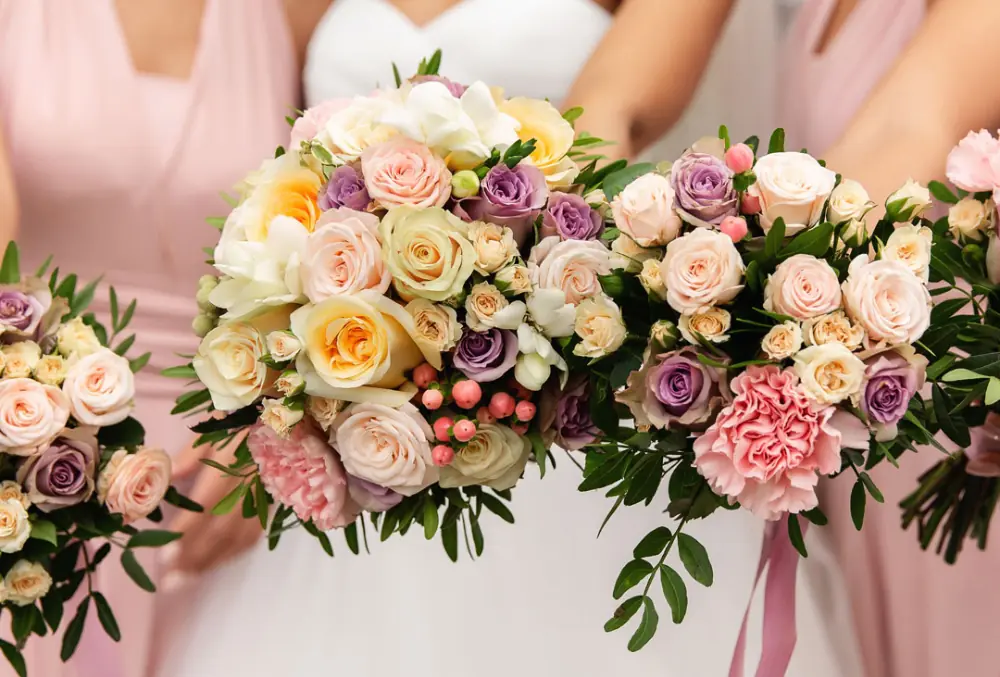One of the most significant wedding processional moments is the bride’s walk down the aisle. Everyone talks about who the bride’s attendants will be as she makes her way down the aisle. People would rarely discuss who would lead the groom down the aisle.
The radiant bride’s ideal partner waits for her upfront as she walks down the aisle. But who walks the groom down the aisle?
There’s no cardinal rule on who is supposed to walk the groom down the aisle. As is customary, the groom’s companion for the walk down the aisle differs depending on the creed, perspectives, and cultural backgrounds. People frequently experience confusion when making this choice. Let’s clarify everything for everyone.
A Christian Wedding Ceremony
In a Christian wedding ceremony, you’ll notice a few options available. Let’s start by examining the custom that is most frequently observed. The bride and groom’s grandparents will be the first to sit. Following that, the bride’s mother will walk down aisle and take a seat followed by the groom’s parents. The best man, groomsmen, and officiant are expected to accompany the groom to the altar.
Sometimes, the groom could walk around from the side rather than proceed down the aisle. The officiant will walk beside the groom if the groomsmen and bridesmaids walk together. The groomsmen will then lead the bridesmaids down the aisle.
Hindu Wedding
In a Hindu wedding, things are slightly different. Hindus are arguably the best at celebrating weddings. The celebrations last for several days at a time, with an elaborate guest list and loud music. The groom rides into the ceremony on a lavishly decked horse, looking almost heroic, and has a “baaraat” with him.
A “baaraat” is a group of guests, mainly from the groom’s family, that march together. Here, the groom is the center of attention, and everyone eagerly awaits his arrival. The bride’s family greets the groom and “baaraat” when they arrive with floral garlands and delectable treats. The bride’s parents then grab the groom by the arms and lead him to the “mandap,” the location of the upcoming wedding ceremony.
As you can see, the processional order of a Hindu wedding is quite different from that of a Christian marriage, as discussed earlier.
A Jewish Wedding
Numerous customs and ceremonies that are part of Jewish weddings contribute to the ceremony’s beauty and lasting impact. They are also brief at the same time. Jewish wedding ceremonies often run between 25 and 45 minutes.
Besides the above, Jewish weddings are renowned for being open and adaptable, allowing families to add ideas and liven up the proceedings. A Jewish wedding involves a lot of planning, which heightens the anticipation.
Women are expected to dress in shoulder-covering costumes for the wedding ceremony, while men should wear head-covering Kippahs or Yarmulkas. Men and women will be invited to take seats on either side of the ceremony if it is an orthodox wedding. There are also ultra-orthodox weddings, when the ceremonies are divided between the sexes, and they participate in them separately.
The officiant is honored to be the first person to walk down the aisle during a Jewish wedding. The groom, joined by both of his parents, follows the officiant. The groom is expected to stay outside the Chuppah (a canopy under which the bride and groom stand during a Jewish wedding ceremony) until his wife walks down the aisle once they get closer to it.
A Muslim Wedding
The signing of the Nikah is the most significant ceremony at a Muslim or Islamic wedding. The marriage contract, known as the Nikah, is what the bride and groom are expected to sign or agree to. Many Muslim families would choose not to have a parade at the wedding.
Many people choose a low-key event. Additionally, Muslim families vary in their adherence to cultural norms and sensibilities. The groom’s parents may accompany him on a “Nikaah.” Like Hindu marriages, a “baaraat” usually accompanies the groom down the aisle.
Non-denominational or Secular Wedding
You have several options if you decide against having a religious ceremony. The groom may accompany his mother down the aisle and then secure her a front-row seat closer to the aisle. The parent of the groom may be assigned to the adjacent seat.
With the parents now sitting close to the aisle, the groom can hug them before continuing to the aisle and participating in the ceremony. An alternative would be for the groom’s parents to follow him down the aisle while they walk in unison. The groom and groomsmen may take their seats at the altar before the start of the ceremony if they intend to greet the guests as they arrive.
Can the Groom Walk Down the Aisle Alone?
While there isn’t a set protocol for a groom’s walk down the aisle, an officiant usually walks ahead of the groom (alone). The moms are situated on their respective sides, and then the husband follows the officiant to take his place up the aisle. Today, seeing the groom taking a solo walk down the aisle is not odd.
Can the Groom’s Parent(s) Walk with Him?
The parent(s) of the groom can walk their son down the aisle. If the groom comes in with his mother, that’s quite natural. All you have to do is discuss it with the officiant beforehand. The bride would come in with his mother, taking her position on the altar and leaving him right next to his groomsmen. The bride and her parents will make a magnificent entrance when the processional begins.
The Bottom Line
There’s no set protocol or standard procedure on who’s supposed to walk the groom down the aisle. Such differs based on people’s perspectives and cultural backgrounds. Who walks down the aisle is up to you to determine! Sure, it’s a wonderful way to include the people who matter most in your life, but in the end, you get to decide who gets to be a part of your big day.


